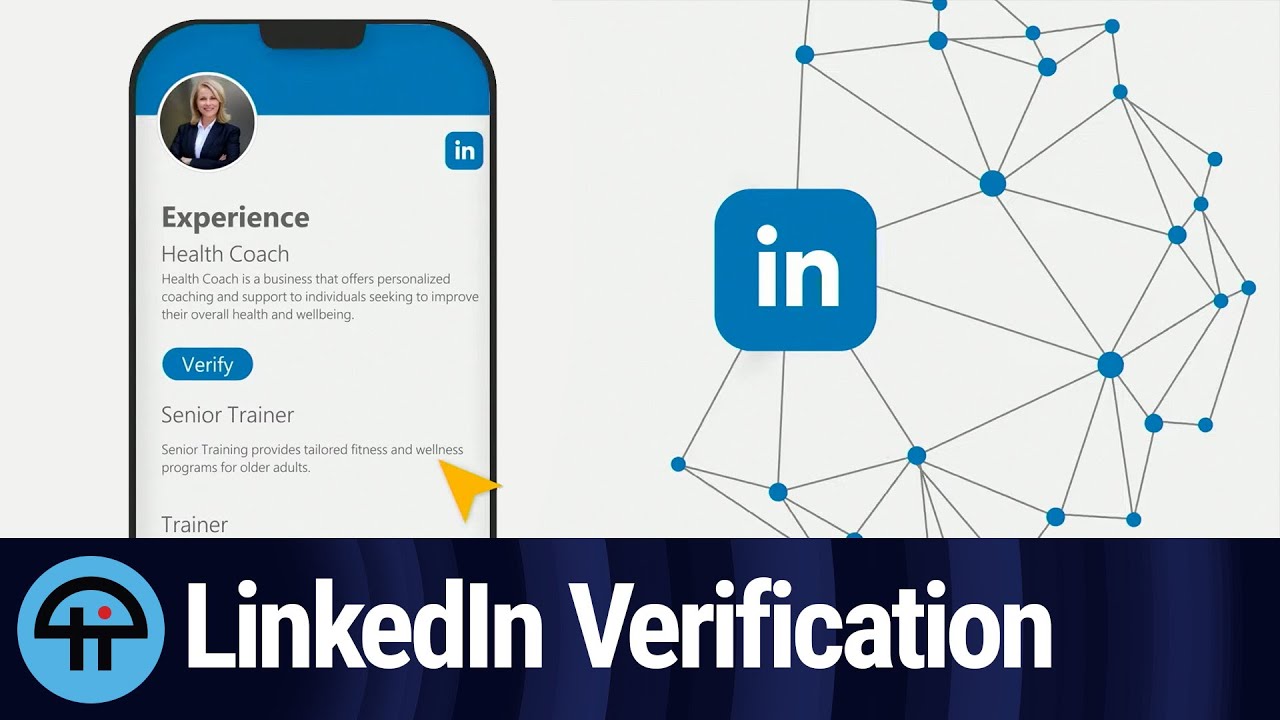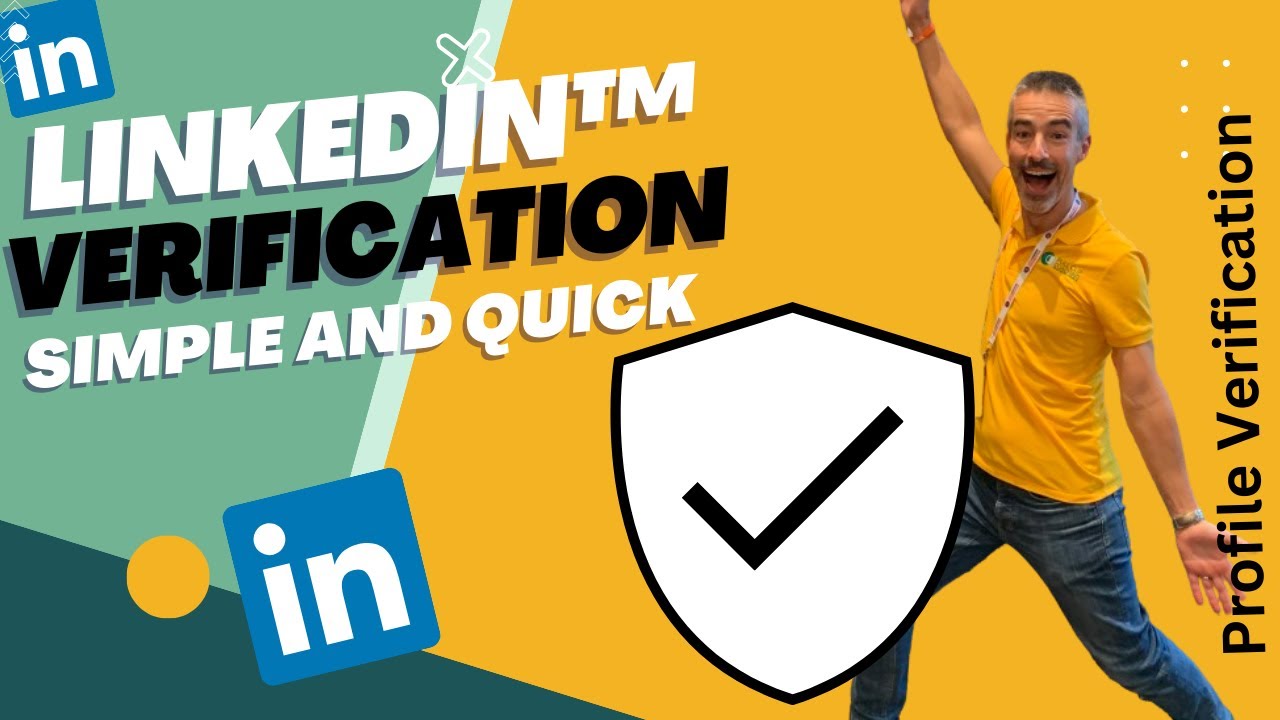Introduction to LinkedIn Verification

In today’s fast-paced professional world, standing out on platforms like LinkedIn is more important than ever. One way to enhance your credibility is through LinkedIn verification. But what does it really mean, and why should you care? In this article, we’ll explore the ins and outs of
Also Read This: How to Find Unique Impressions on LinkedIn Analytics
What Does LinkedIn Verification Mean?

LinkedIn verification is a process designed to confirm that you are who you say you are on the platform. This involves validating your identity, ensuring that the information you present is accurate and trustworthy. Like a blue checkmark on Twitter or Instagram, LinkedIn’s verification feature can lend an air of authenticity and credibility to your profile. Here’s what you need to know:
- Improved Credibility: A verified profile signals to others that you’re a legitimate user. Especially for professionals in high-stakes industries, this could mean the difference between getting a connection or being ignored.
- Enhanced Network Connections: Being verified may open doors to new networking opportunities. The professional community is more likely to engage with verified individuals, leading to potential collaborations or job offers.
- Increased Visibility: Verified profiles may appear higher in searches, making it easier for colleagues, recruiters, and potential clients to find you. This increased visibility can be a game-changer in competitive job markets.
- Trust from Employers: Recruiters often scan LinkedIn to vet candidates. A verified profile can help reassure them that the information you’ve provided is accurate, fostering trust.
But let’s dive a little deeper into what the verification process entails. Generally, LinkedIn verification often requires you to submit documentation or undergo procedures to confirm your identity. This might include:
- Providing a valid ID (like a driver’s license or passport)
- Confirming your email address and/or phone number
- Having connections who can vouch for your identity
While LinkedIn has been working on expanding verification features, it’s important to note that not everyone may qualify or be approved. LinkedIn tends to prioritize profiles that demonstrate substantial activity and engagement on the platform.
In conclusion, LinkedIn verification is about more than just a badge; it’s a step toward enhancing your professional presence online. It can contribute positively to your networking efforts and potentially boost your career. However, it’s also crucial to maintain an authentic profile and engage with the LinkedIn community meaningfully, regardless of verification status. So, while pursuing verification can have its benefits, remember that building genuine connections and showcasing your skills should always be at the forefront.
Also Read This: How to Remove Education from LinkedIn: Editing Your LinkedIn Education History
3. Benefits of Being Verified on LinkedIn
Getting verified on LinkedIn isn't just a badge on your profile; it comes with a myriad of benefits that can significantly impact your professional journey. Let’s dive into what those benefits are and why you should consider pursuing verification.
Enhanced Credibility: A verified badge next to your name acts like a stamp of credibility. It signals to potential employers, clients, and connections that your profile has been authenticated. In a world where fake identities and scams abound, this little blue check can make a big difference in how people perceive you.
Increased Visibility: Verified accounts often have better visibility on the platform. This means that your posts, articles, and updates may reach a wider audience. If you’re in sales, marketing, or even job hunting, the exposure can lead to more opportunities and connections.
Stronger Networking: When you're verified, people are more likely to reach out to you. It shows that you take your professional presence seriously. A verified status can open doors to networking opportunities that might not be available otherwise, paving the way for collaborations and partnerships.
Access to Exclusive Features: LinkedIn often rolls out new features that prioritize verified users. This could include early access to new tools, features for content creation, or even priority in LinkedIn’s search results. Being among the first to access these tools can give you a competitive edge.
Trust from Recruiters: If you’re job hunting, having that verification can boost your profile’s attractiveness to recruiters. They can validate your credentials in a more straightforward way, leading to increased chances of landing job interviews. Recruiters are more likely to engage with profiles they can trust, so this is a significant advantage.
Social Proof: When others see that you’re verified, it adds a layer of social proof to your professional narrative. It can lead to increased engagement on your posts and articles as people feel more inclined to interact with someone they regard as an authority in their field.
In Short: The benefits of being verified on LinkedIn can be transformative for your career. From increased visibility and networking opportunities to enhanced credibility, this badge can serve as a powerful tool in your professional arsenal. However, before jumping into the verification process, it’s essential also to consider certain factors.
Also Read This: How to Write and Publish an Engaging Article on LinkedIn
4. Considerations Before Getting Verified
While the perks of LinkedIn verification sound enticing, it’s essential to weigh some considerations before you dive in. Here are a few key points to think about:
- Eligibility Criteria: Not everyone can get verified. LinkedIn has specific criteria that users must meet. This often includes having a significant number of connections, an established work history, and active engagement on the platform. Be sure to review these requirements to see if you qualify.
- Time and Effort: The verification process isn't instant. It requires that you complete your profile, build your network, and engage with content regularly. Consider whether you're willing to invest the time and effort needed to enhance your online presence before applying.
- Expectation Management: A verified badge doesn’t guarantee job offers or increased connections. While it does boost your credibility, it's essential to remember that you still need to put in the work to make meaningful connections and showcase your skills.
- Privacy Concerns: Being verified means making your professional identity more visible. If you’re someone who values privacy, you might want to think about how this will impact your comfort level on the platform. Consider what information you’re sharing and whether you’re okay with that level of exposure.
- Focus on Quality Over Quantity: While pursuing verification, don’t lose sight of the quality of your connections and engagement. The goal is to build a robust professional network, not just to acquire a badge. Quality interactions often lead to more significant professional growth.
In Conclusion: While being verified on LinkedIn offers several advantages, it’s important to consider your own readiness for such a commitment. Think about your eligibility, the time investment, and your expectations. With careful consideration, you can make a decision that aligns with your professional goals.
Also Read This: Finding All Your LinkedIn Posts: A Quick Guide for Users
5. Steps to Get Verified on LinkedIn
Getting your LinkedIn profile verified can be a game changer, especially if you're looking to boost your professional credibility. But the verification process can seem daunting if you're not familiar with it. Don’t worry! Here’s a straightforward guide to help you navigate the steps to get verified on LinkedIn.
- Ensure Your Profile Is Complete: Before you even think about verification, make sure your LinkedIn profile is fully filled out. This includes having a professional profile picture, a compelling headline, detailed work experience, and skills that reflect your expertise. Think of it as tidying up your front yard before inviting guests over!
- Check Your Network: LinkedIn verification often considers your connections and engagement. Aim to have a robust network of connections; typically, having at least 500 connections signals to LinkedIn that you're an active member of the community.
- Build a Professional Reputation: Engage with your connections by sharing valuable content, commenting on posts, and participating in groups relevant to your industry. The more you're seen as an authority in your field, the better your chances of verification.
- Submit a Request for Verification: Once your profile is in tip-top shape, you can request verification. Go to the LinkedIn Help Center, search for "Request Verification," and follow the prompts. LinkedIn will ask for specific details about your identity, including your name, email, and possibly documents confirming your professional status.
- Be Patient: After you've submitted your request, it may take some time for LinkedIn to review and respond. Verification isn't instant, so use this time to keep improving your profile and networking. If they deny your application, don't get discouraged! You can always make adjustments and try again.
Following these steps doesn't guarantee verification, but they will certainly increase your chances. Remember, LinkedIn values authenticity, so be genuine in your interactions and honest in your professional narrative. Good luck on your verification journey!
Also Read This: How to Add CFP Certification to Your LinkedIn Profile
6. Alternatives to LinkedIn Verification
While LinkedIn verification adds a layer of credibility to your profile, it’s not the only way to establish authority in your professional network. Here are some effective alternatives you can consider:
- Collect Recommendations: One of the best ways to showcase your skills is through recommendations from colleagues, clients, and supervisors. These testimonials can provide social proof and enhance your profile’s credibility.
- Use an Online Portfolio: If you’re in a creative field or any role where showcasing work is beneficial, creating an online portfolio can set you apart. A well-curated portfolio can demonstrate your skills directly, giving potential employers or clients tangible evidence of your work.
- Get Certified: Pursuing certifications in your field not only enhances your knowledge but also signals to others that you're committed to your profession. Whether it’s a course from a respected institution or an online platform like Coursera or Udemy, certifications can bolster your profile.
- Engage in Public Speaking: Becoming a speaker at industry events or webinars can significantly enhance your credibility. Sharing your insights with a larger audience showcases your expertise and positions you as a thought leader in your field.
- Network Through Other Platforms: Don’t limit your networking to LinkedIn. Platforms like Twitter, Facebook Groups, and even industry-specific forums can help you connect with professionals in your field. Being active in these communities can increase your visibility and trustworthiness.
While LinkedIn verification is a valuable addition, don’t overlook the power of building your professional identity through other means. Use a combination of these alternatives to create a strong professional presence that transcends any single platform.
Conclusion: Is LinkedIn Verification Right for You?
Deciding whether to pursue LinkedIn verification requires a careful consideration of both the benefits it offers and the nature of your professional goals. Here are some crucial aspects to weigh:
- Enhanced Credibility: Verification enhances your credibility, making you stand out in a crowded job market. This can be particularly beneficial if you frequently engage with recruiters or potential clients.
- Networking Opportunities: A verified profile may attract more connections and engagement, leading to greater networking opportunities. People are often more inclined to connect with verified professionals.
- Stand Out to Employers: For job seekers, verification can signal to employers that you take your professional presence seriously, potentially increasing your chances of being noticed.
- Not Everyone Needs It: However, verification isn’t essential for everyone. If you’re in a niche industry or not actively seeking new opportunities, it may not be necessary.
Ultimately, the decision to verify your LinkedIn profile should align with your professional branding strategy and goals. Consider your industry norms, your level of activity on the platform, and how much you value credibility versus privacy. If you aim to grow your network or boost your career, LinkedIn verification could be a valuable asset. However, if you prefer a less public profile, it may not be the right choice.
 admin
admin








